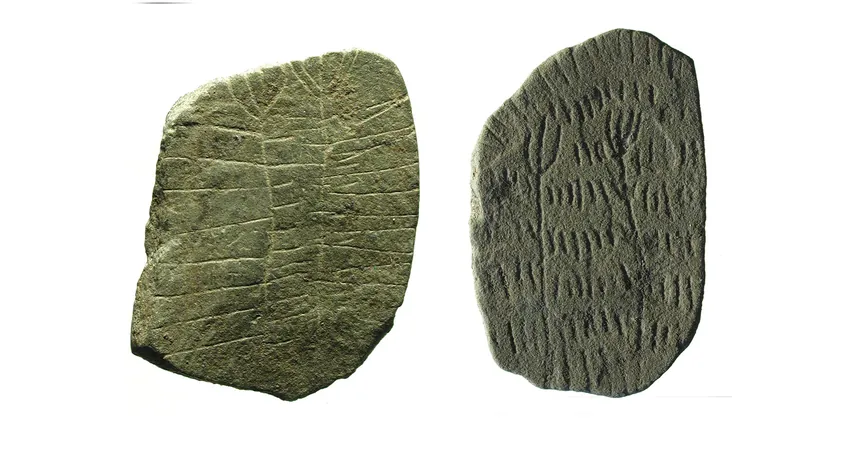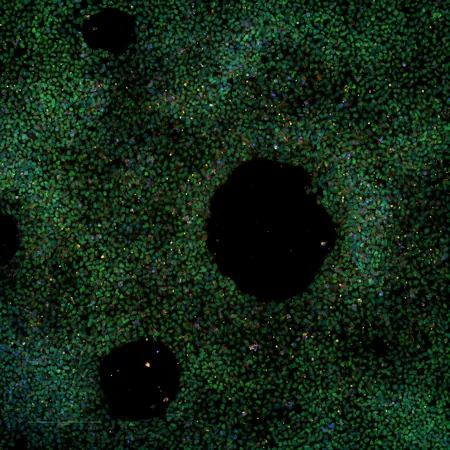
Unraveling Denmark's Ancient Sun Stones: Were They Ritual Offerings After a Volcanic Catastrophe?
2025-01-21
Author: John Tan
COPENHAGEN, DENMARK—Groundbreaking research from the University of Copenhagen has revealed startling insights into the climatic challenges faced by Neolithic farmers in Northern Europe around 2900 B.C., following a significant volcanic eruption. Analysis of ice cores from the Greenland ice sheet indicates that this eruption resulted in a period of cold weather that severely diminished sunlight and negatively impacted crop yields.
In light of these findings, a team comprising researchers from the University of Copenhagen, the Museum of Bornholm, and Denmark’s National Museum has revisited the enigmatic “sun stones” discovered at the Neolithic site of Vasagård on Bornholm Island. These flat slate-like stones, adorned with intricate engravings of flora, fields, and sun symbols, hold immense historical significance. Rune Iversen, a researcher at the University of Copenhagen, explained, “These artifacts likely symbolized fertility and may have been used in sacrificial practices intended to invoke the sun’s blessings for growth and prosperity.”
Excavations at the Vasagård West site have unearthed numerous sun stones alongside a treasure trove of artifacts, including animal remains, shards of pottery, and flint tools, all positioned within a prehistoric causewayed enclosure. This suggests a ritualistic environment where the community sought to protect themselves from ongoing climatic troubles through sacrificial offerings. Iversen theorized, “It is plausible that the Neolithic inhabitants of Bornholm engaged in these sacrifices to stave off further environmental decline or, alternatively, to express their gratitude for the sun's return.”
Moreover, the study highlights how drastic climatic changes may have catalyzed a significant shift in societal practices on the island. Approximately 5,000 years ago, there was a transition from utilizing sacrificial ditches to the construction of palisades and circular cult houses. This evolution in architecture could indicate an adaptation to changing environmental conditions and perhaps the development of new forms of religious expression.
The implications of these findings extend beyond mere archaeological curiosity; they reveal the profound relationship between ancient peoples and the natural world, underscoring their efforts to manipulate their environment through ritual to ensure survival.
As Denmark continues to unearth its rich historical tapestry, the sun stones of Bornholm tantalize researchers and history enthusiasts alike. What more secrets lie buried in the past, waiting to be uncovered? Stay tuned for further updates on this fascinating topic and upcoming discoveries!






 Brasil (PT)
Brasil (PT)
 Canada (EN)
Canada (EN)
 Chile (ES)
Chile (ES)
 Česko (CS)
Česko (CS)
 대한민국 (KO)
대한민국 (KO)
 España (ES)
España (ES)
 France (FR)
France (FR)
 Hong Kong (EN)
Hong Kong (EN)
 Italia (IT)
Italia (IT)
 日本 (JA)
日本 (JA)
 Magyarország (HU)
Magyarország (HU)
 Norge (NO)
Norge (NO)
 Polska (PL)
Polska (PL)
 Schweiz (DE)
Schweiz (DE)
 Singapore (EN)
Singapore (EN)
 Sverige (SV)
Sverige (SV)
 Suomi (FI)
Suomi (FI)
 Türkiye (TR)
Türkiye (TR)
 الإمارات العربية المتحدة (AR)
الإمارات العربية المتحدة (AR)